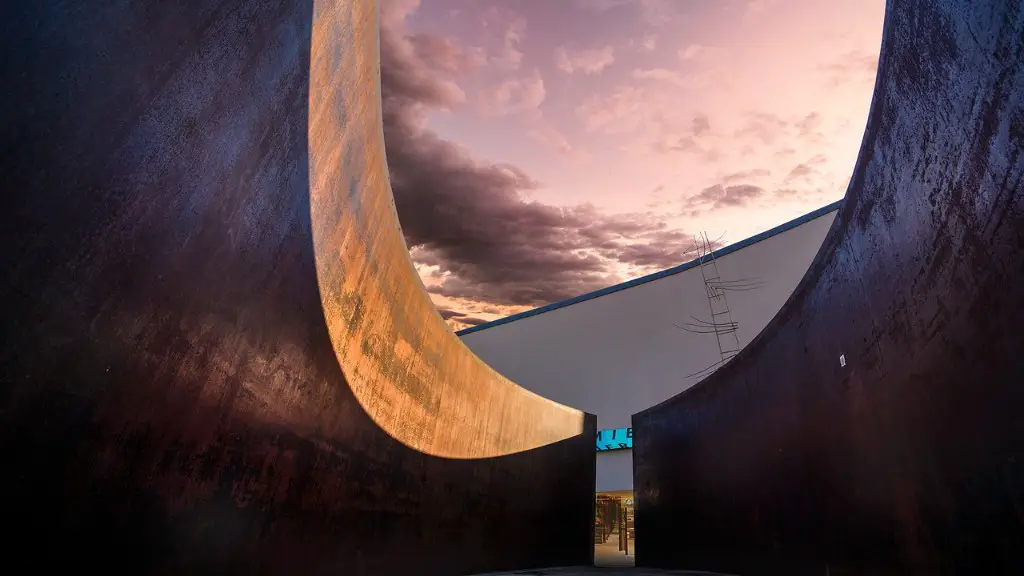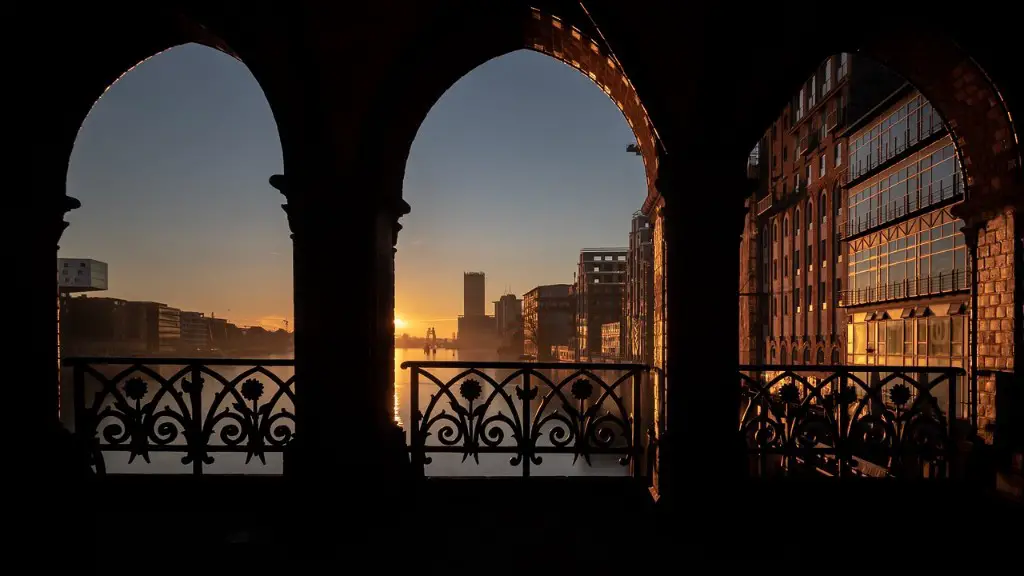Architecture Types
Architecture is an art, science, and practice of designing and constructing buildings, structures and spaces, commonly known as architectural works. Throughout history various architectural styles and types have been developed, from the classic examples of cave dwellings to the inventions of modern day skyscrapers. This article will provide a look into the spectrum of architecture types that exist today.
The most recognized type of architecture is classical architecture. It is a style of architecture that was developed in Europe during the ancient and medieval periods, and it can be seen in some of the world’s most well-known monuments, such as the Parthenon in Athens. Its characteristic elements include simple and symmetrical forms, the use of columns and arches, and an emphasis on balance and harmony.
Another type of architecture is neoclassical architecture, which is known for its eclectic revival of styles from the classical period. It emerged in the 18th century, and it is characterized by square shapes and elements such as pediments, colonnades, and porticos. Neoclassical architecture has become popular in civic buildings around the world and can be seen in monuments such as the U.S. Supreme Court building in Washington D.C.
Renaissance architecture is another example of a distinct architectural style. It was a point of transition between classical and modern architecture, and it developed primarily in 15th and 16th century Europe. Its defining features included the revival of forms and designs from the ancient world and the use of linear perspective in painting and architecture.
Modern architecture is popularly known for its move from traditional and neoclassical architecture towards a more abstract and simpler form. The style was unveiled in the early 20th century and is characterized by an emphasis on functionality, the use of glass and steel, and a focus on simplicity and minimalism.
One of the most eye-catching types of architecture is the gothic style, which appeared in the 12th century Europe. It is most easily identified by its pointed arches, ribbed vaults, and spires. Many cathedrals in Europe were constructed in the gothic style, and the architecture is still highly valued today.
Bauhaus architecture is another notable type of architecture from the early 20th century. It was a movement that aimed to merge the use of modern materials, like glass and steel, along with an appreciation for traditional craftsmanship. Bauhaus architecture is still highly influential in modern cities around the world.
Art Deco is one of the more iconic architectural types, as evidenced by its popularity in many big cities in the early 20th century. It is an ornate, luxurious style of architecture, characterized by its geometric shapes, bold lines, and intricate details.
Construction Types
Construction is a complex and multifaceted process, and there are many different types of construction, each with its own purpose and method. For example, residential construction is typically done to create, renovate, or upgrade homes. This type of construction entails the building of single-family, multi-family and related structures such as garages and sheds.
Commercial construction is another type of building process. It is often done for projects such as office buildings, shopping centers, hospitality and restaurants, retail centers, and more. This type of construction requires special attention to detail and careful consideration of economic and legal factors.
Industrial construction is a type of construction that deals with the construction of buildings for industrial purposes. This type of construction is often seen in factories, warehouses, refineries, power plants, and other industrial buildings.
Infrastructure construction is also a key type of construction, as it is responsible for the construction of roads, bridges, tunnels, and other large projects designed to keep people and goods moving. This type of construction focuses on the development of the physical infrastructure necessary to ensure the smooth operation of a region’s economy.
Institutional construction is another type of construction that involves the development of educational and health centers, as well as performing arts buildings, religious structures, and other places of social and cultural significance. Such structures usually have a more aesthetically pleasing design, but are still built with a focus on performance and usability.
Green construction is a type focused on sustainable building practices. This type of construction encompasses the use of sustainable materials, efficient energy use, and the use of green building technology. This type of construction is essential to the reduction of the environmental impacts of construction projects.
Architectural Materials
Architectural materials are the physical components of a structure that play a crucial role in its design, aesthetic, and overall stability. Common materials for architectural structures include: concrete, masonry, steel, wood, glass, and more.
Concrete is an incredibly popular and versatile building material that has been used since ancient times. It is one of the strongest and most durable materials, and is used often in the creation of foundations, walls, columns, and other structural elements.
Masonry is a type of construction that utilizes brick, stone, and tile to create walls, floors, and columns. This type of construction is often seen in churches, civic buildings, and other historic structures.
Steel is an incredibly strong material used in the construction of beams, posts, walls, and other elements. Steel is one of the most popular building materials today, and is used in the construction of heavy-duty structures such as bridges, stadiums, and skyscrapers.
Wood is a very popular building material due to its ease of use, aesthetic appeal, and its natural insulating properties. It is often used in the construction of homes, offices, and other types of structures.
Glass is a material incredibly trusted for its versatile applications and for its accessibility. It is used for doors, windows, skylights, walls, domes and more.
Modern Architecture
Modern architecture is one of the most recognizably distinct types of architecture in the world. It is characterized by its use of geometric shapes, its minimalistic forms, and its focus on balance and simple design.
The modern style was initially developed as a reaction to the ornate, European styles of architecture at the time. Its main aim was to change the reigning norms, and to focus on designs that aligned with the principles of efficiency, utility, and economy.
Today, modern architects continue to build upon the principles of modern architecture while adapting it to suit contemporary needs. Some of the principles of modern architecture applied in today’s designs include the use of open floor plans and a focus on large windows and natural light.
Modern architecture is an incredibly popular choice for residential, commercial, and industrial buildings. It is also one of the most iconic styles of architecture, as evidenced by its presence in many popular cities around the world.
Sustainable Architecture
Sustainable architecture is an idea that is rapidly rising in popularity, as more and more people strive to make a conscious effort to reduce their environmental impacts. The idea of sustainability encompasses the efficient use of materials and energy, the use of renewable energy sources, and the use of design elements and materials that minimize the negative impacts on the environment.
Sustainable architecture is often coupled with the idea of green building, which is largely responsible for the development of advanced materials and technologies for use in sustainable architecture. This includes energy efficient materials and the implementation of renewable energy sources, such as solar and wind.
Sustainable architecture is now being applied across the globe, in residential, commercial, and industrial projects alike. There is a focus on designs that consider many of the factors mentioned earlier, as well as an emphasis on the usage of eco-friendly materials.
Architectural Theory
Architectural theory is a valuable part of any architecture curriculum, as it provides insight into the art and science of design. Theories related to architecture can range from those that focus on core aesthetic principles and forms, to those that are more detailed and focus on practical aspects of design.
A popular theory in modern architecture is the notion of universal design, which seeks to create solutions that benefit everyone, regardless of age, size, or ability level. This concept is used in many forms of traditional and contemporary architecture, and it focuses on accessibility and usability for all users.
Modernism is another theory closely associated with modern architecture, and it is focused on the elimination of unnecessary and non-functional elements. It values a focus on minimization and simplification, in order to achieve a design that is both practical and aesthetically pleasing.
Deconstructivism is an architectural theory that often draws inspiration from the chaos of disorder and fragmentation. It is a loosely defined style, but it is often identified by its use of random and non-linear elements.
Tectonics is a term typically used to describe the integration of form, function, and technology in architectural design. It is a gradual process, focused on the relationship between structure, materials, and materials.
Organic architecture is an architectural paradigm that emphasizes harmony between the built environment and its natural surroundings. It is often associated with Frank Lloyd Wright, and it incorporates large windows, natural materials, and rounded forms.
Finally, environmental design is another architectural theory that is focused on the optimization of space, materials, and energy in the built environment. It strives to balance the needs of a structure with its environmental impact, with a focus on efficiency and sustainability.

